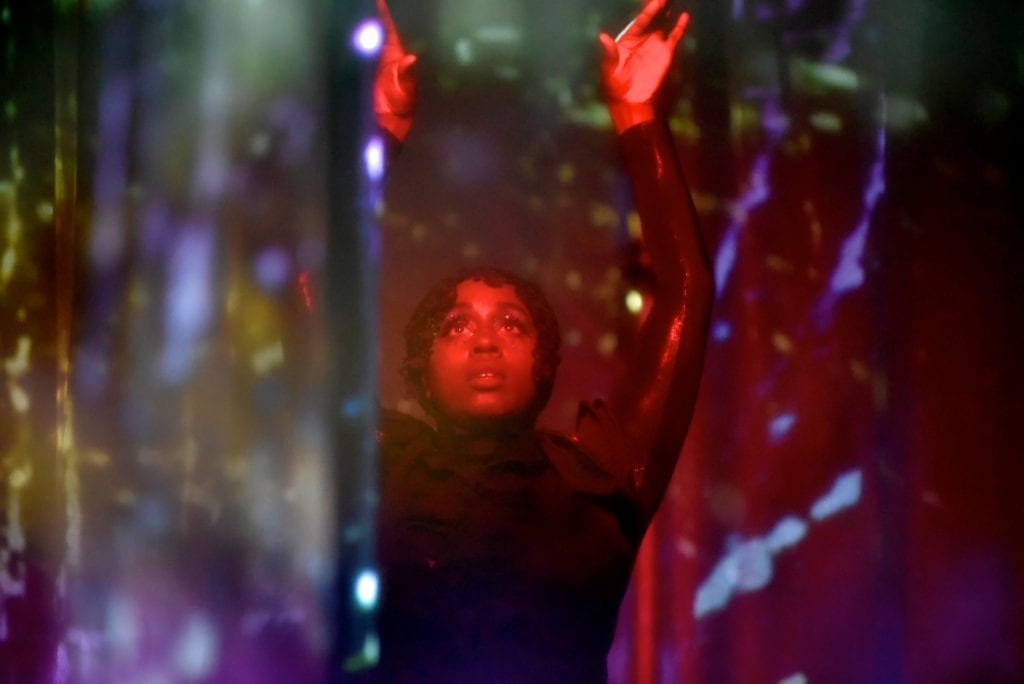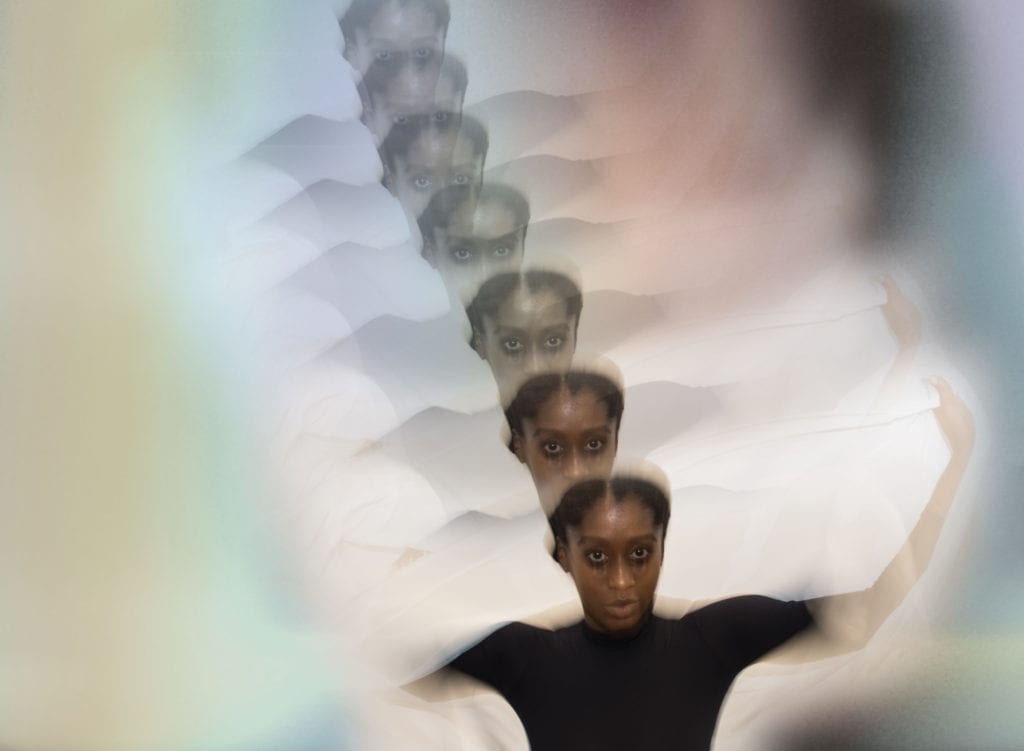
Over the last year I have been exploring approaches to the creation of accessible immersive tech art spaces. In this series of blog posts I will share the research and lived experience that has underpinned this as well as the art that has been created along the way.
For more information about the work it has spawned, visit www.nwandoebizie.com
or contact Nwando@nwandoebizie.com
Origin Story
For as long as I can remember I’ve seen the world in a way that is apparently strange, not the accepted norm. One night, 4 years ago, the moon was full and low, I was driving over a bridge in the car with my parents. I mentioned, casually how hazy the lights that night looked. Causing a surprising reaction from my parents – a veritable wailing, gnashing of teeth and outpouring of the fear that I had early-onset cataracts.
One trip to the optician later confirmed that there was nothing wrong with my eyes which in fact were near 20/20 vision. But further conversations with my parents confirmed that what I perceived out there in the world was very different to the way they did.
And so began a search. I dug deep, trawling the net with my net. I asked person after person – and what do you see when you look at the sky? I descended into the images behind my eyes until I found a word – Palinopsia – Latin, literally to ‘see again’ – a rare neurological condition which manifests as a visual disturbance defined as the recurrence of a visual image after the stimulus has been removed.

And what do I see? A world full to the brim of glowing lines and shapes, whizzing, fizzing dots and auras of people, trees, stars crossing and filling the vista. When I climb the hills around my familial home (the moors of Saddleworth) they grow more intense and kaleidescopic, amassing into recognisable, pulsating, geometric shapes. On a clear day, looking at the sky, it seems full of trillions of fizzy dots, like a bluish, translucent tv static, like Seurat had painted the world just for me. When it all gets too much it coalesces on me, light becoming sound, sound becoming indistinguishable from an inner buzzing pressure and all I can do is lie down in a darkened room, trying not to move, not to think.
This was 2014. The same year that unbeknownst to me, a group of neuroscientists defined a new condition as: ‘Visual Snow’. In the peer reviewed paper Schankin et al 2014, it was summarised as “an almost completely ignored problem” and a whole heap of symptoms (16 and growing) visual, aural, psychological found a new home in a new condition. A condition that thousands of us organise our realities around. Deriving meaning from its clear boundaries. Finding ourselves understood for the first time.
Visual Snow Syndrome
(Extract from Visual Snow Initiative website)
Visual Snow Syndrome can be a devastating neurological condition that can affect an individual’s vision, hearing, cognitive and other functioning.
The diagnostic criteria concludes that the patient must have:
- Visual snow (i.e. dynamic, continuous, tiny dots in their entire visual field) for three months, and
At least two of the following four categories of additional symptoms:
- Palinopsia (afterimages or trailing),
- Enhanced entoptic phenomena (floaters, blue-field entoptic phenomena, self-light of the eye or spontaneous photopsia)
- Photophobia (light sensitivity), and
- Nyctalopia (impaired night vision).
Additionally, their symptoms must not be:
- Consistent with a typical migraine visual aura (i.e. a migraine that produces visual symptoms), or
- Attributable to another disorder (i.e. the patient’s eye exams produce normal results, and they have not taken any psychotropic drugs).
- Most patients experience many other additional symptoms. Visual Snow affects a patient’s vision 24/7, which means that they never have any relief from it – even when they close their eyes. Currently, there is no cure for the disease and it is yet to receive widespread recognition within the medical profession.
Peter Goadsby, MD PhD
Professor of Neurology
Owen White, MD PhD FRACP
Professor of Neurosciences
Victoria Susan Pelak, MD
Professor of Neurology and Ophthalmology
Yasser Khan, MD FRCSC
Oculoplastic, Orbital and Ophthalmic Surgery
If you think you or someone you know might have Visual Snow, you can find more information and contacts here:
There are also supportive facebook groups and online forums.

